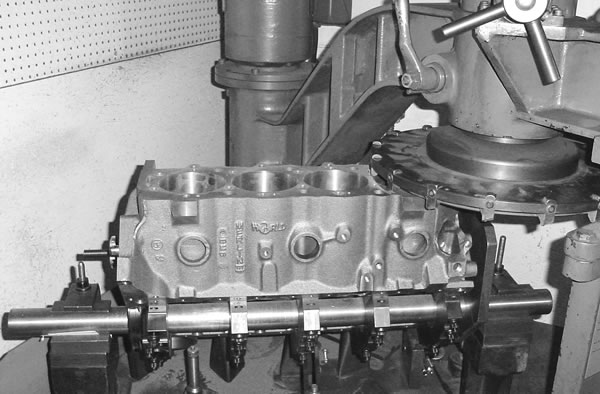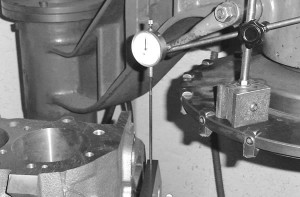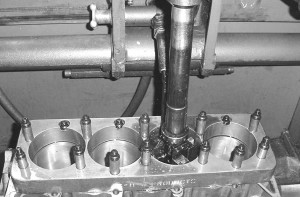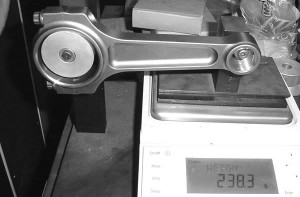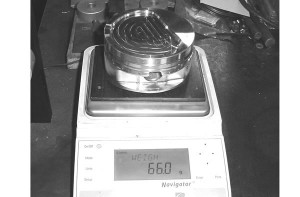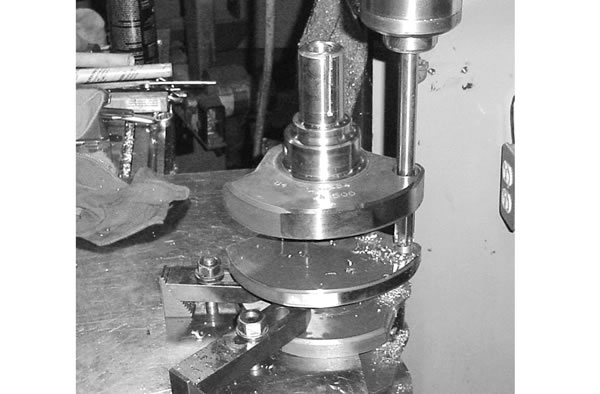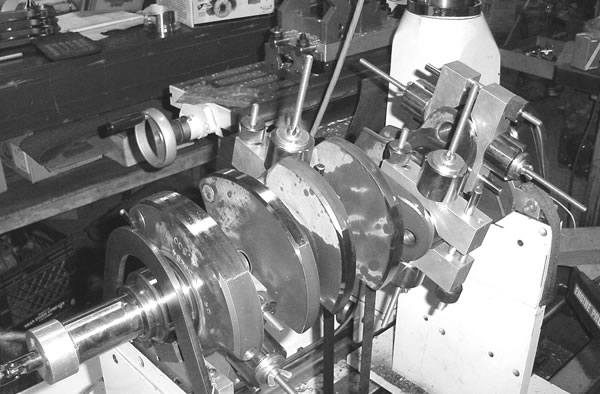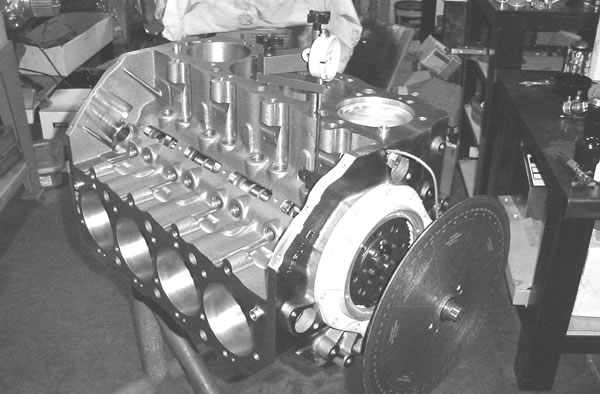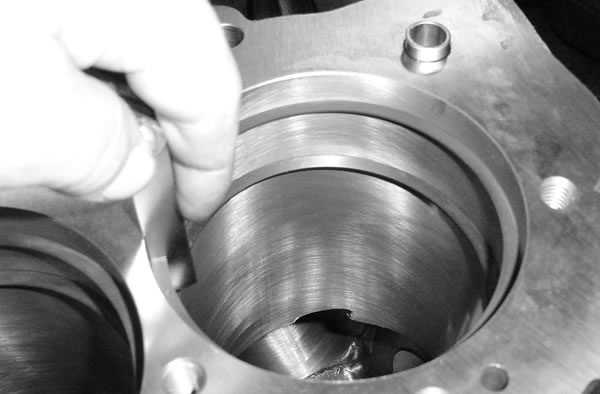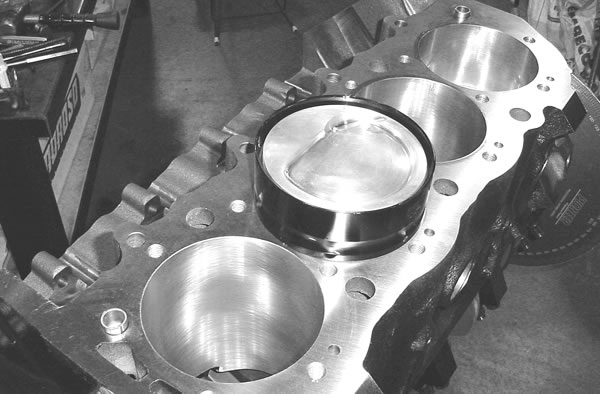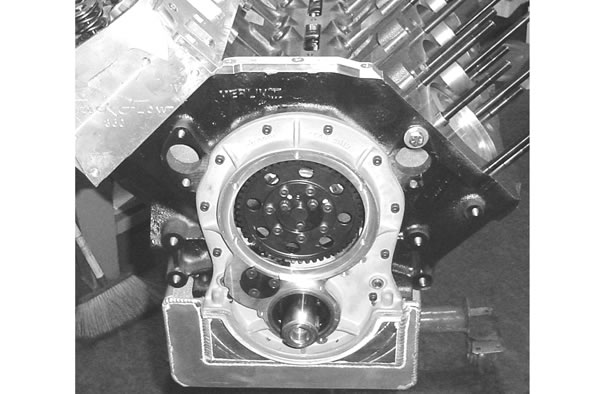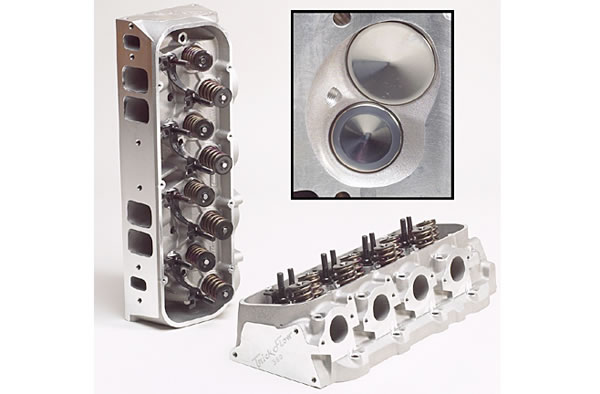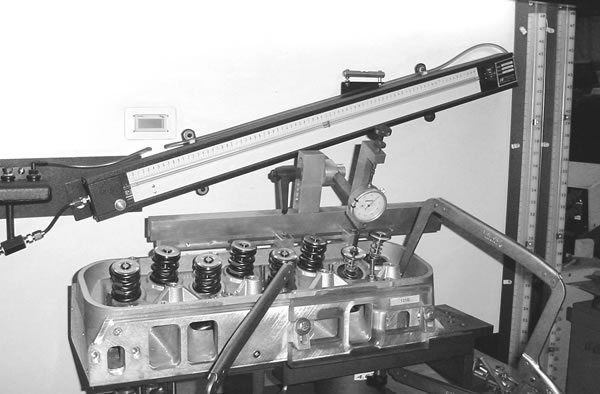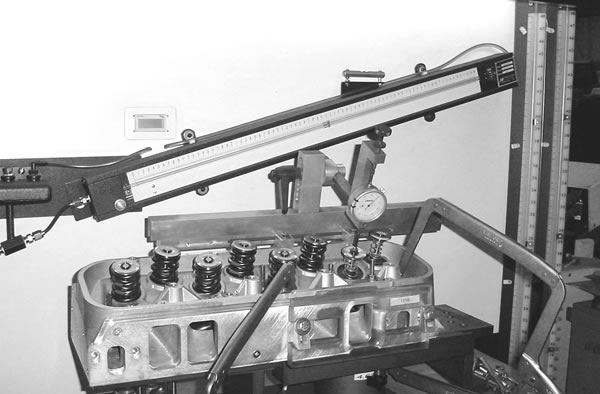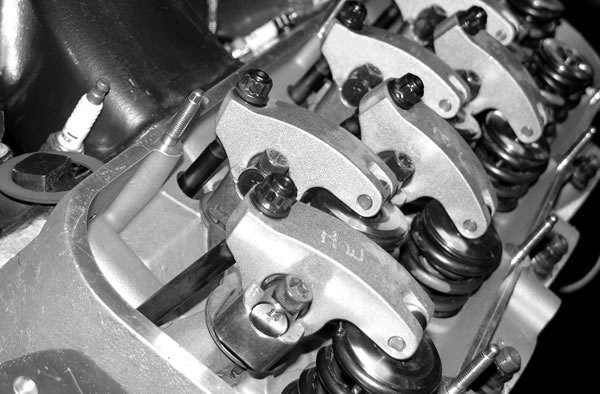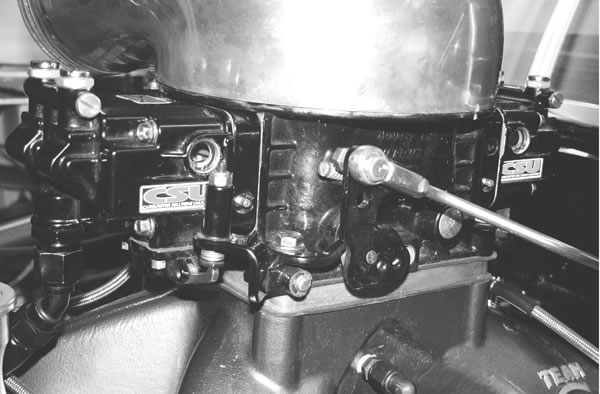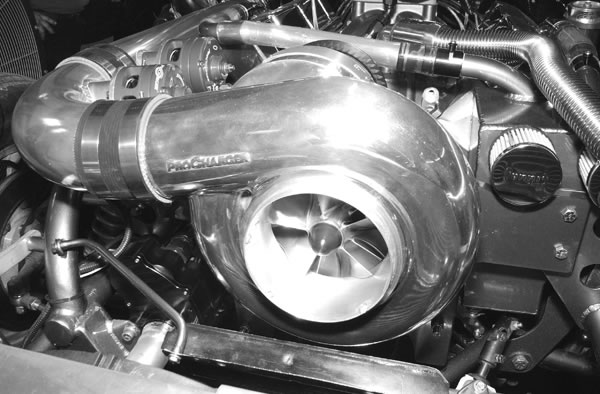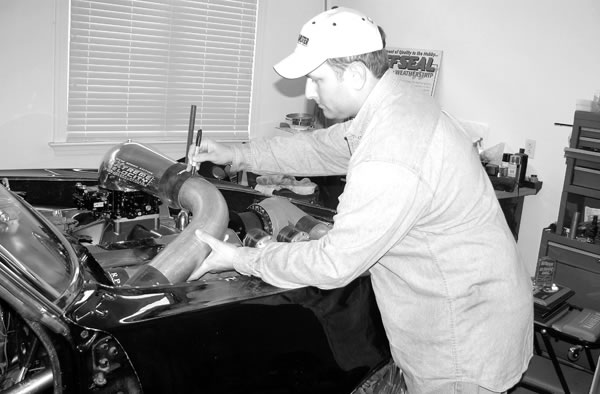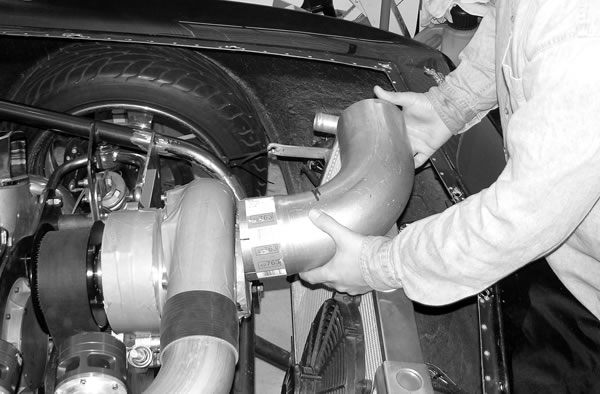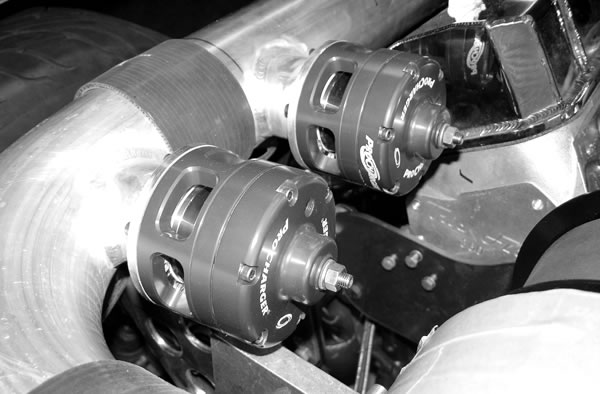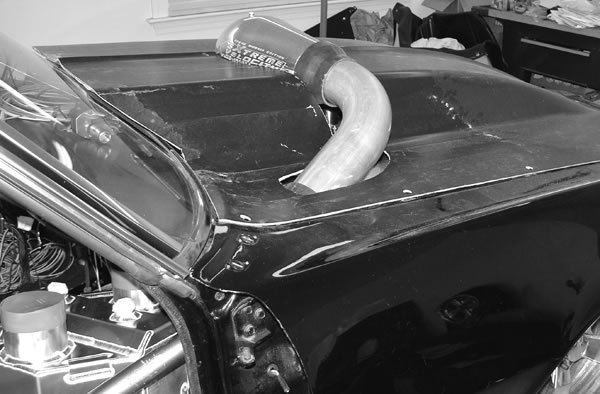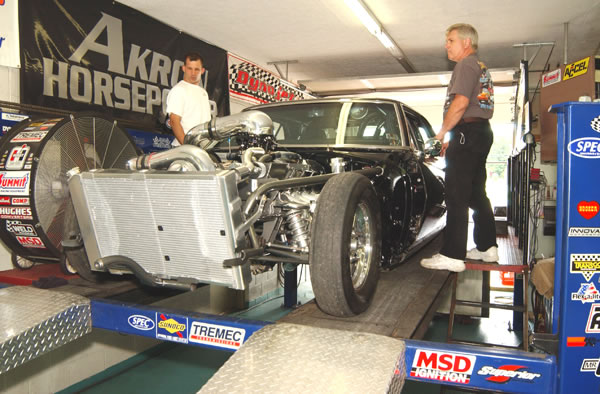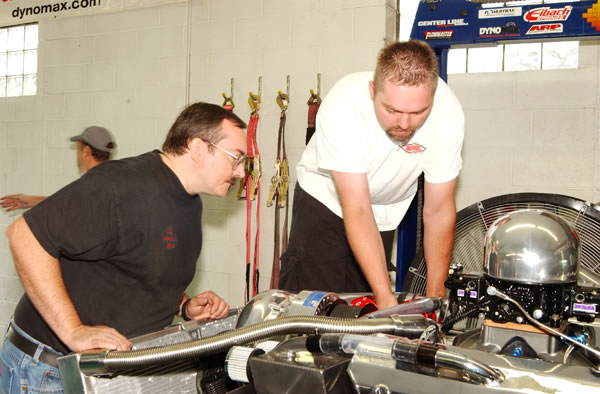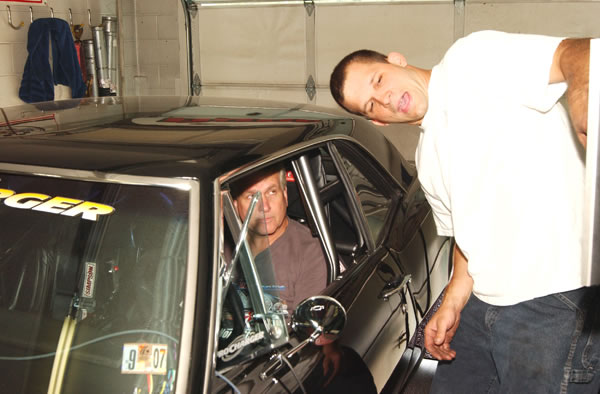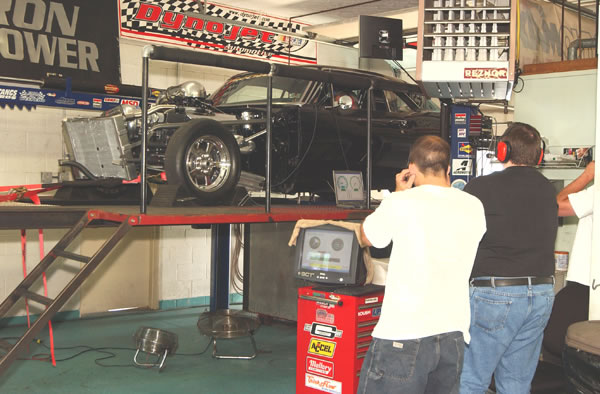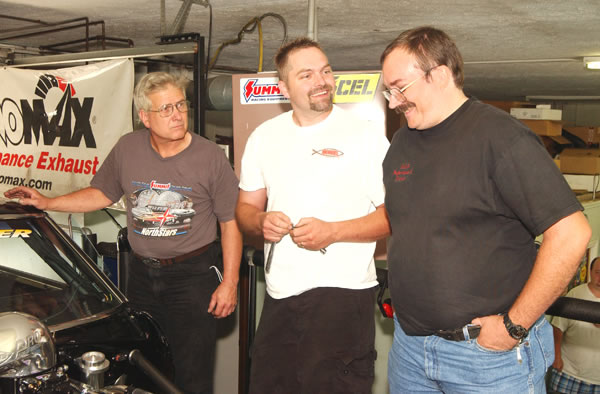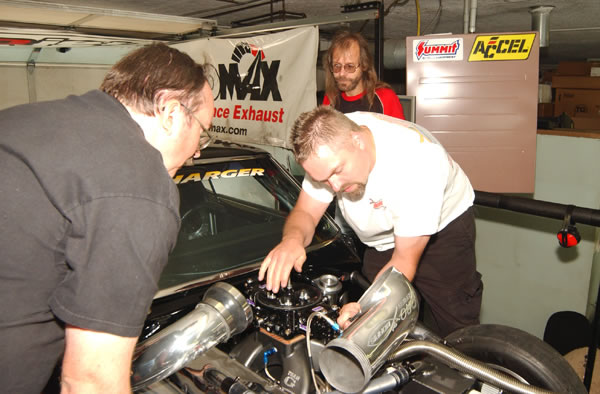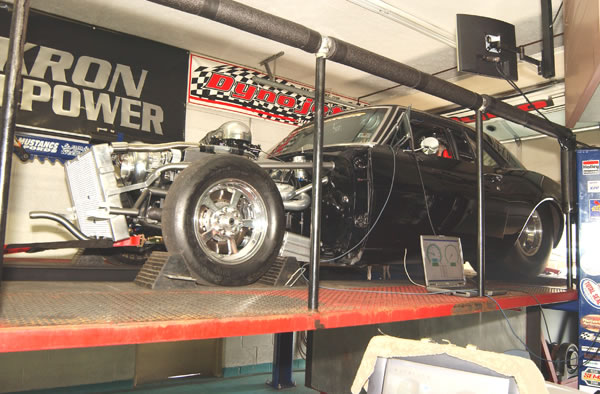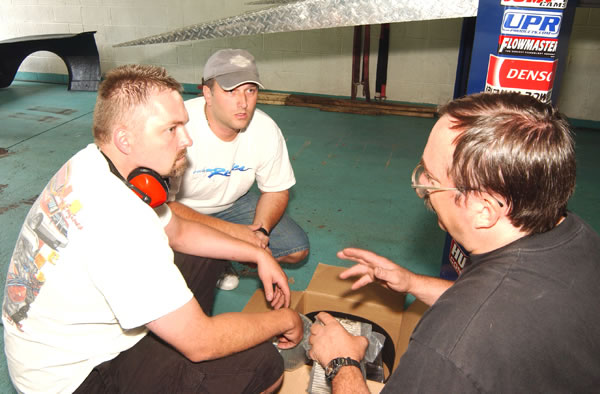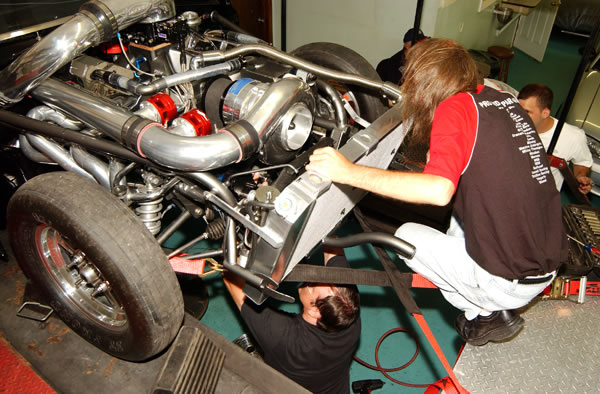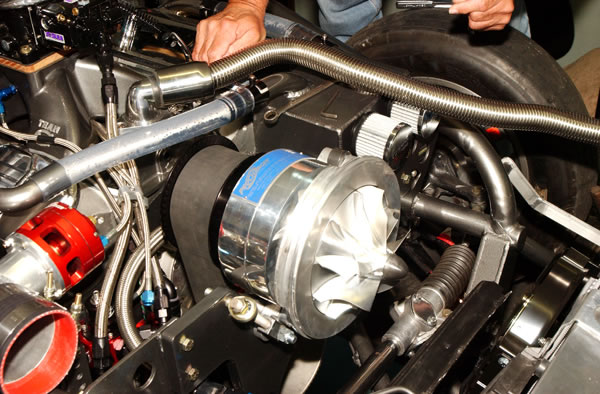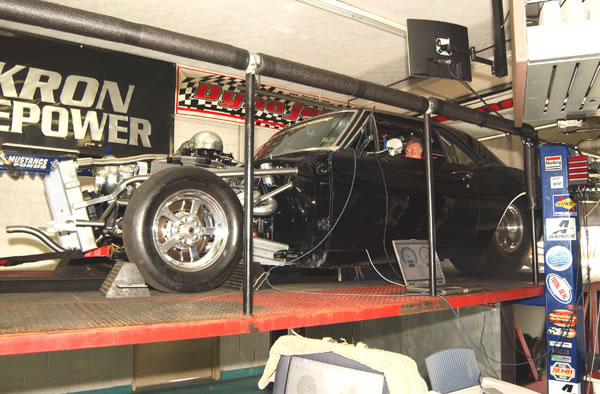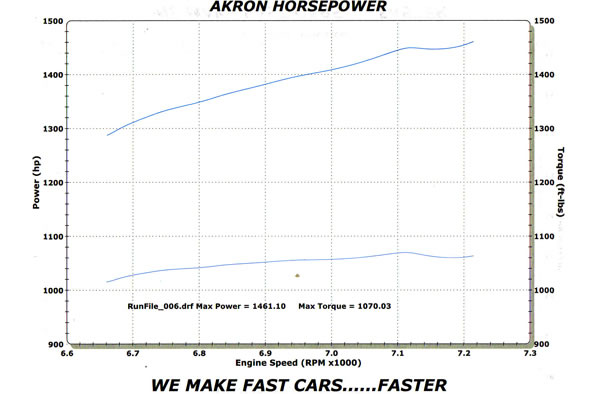

Furious 580: Under the Hood of 2007’s Fastest Street Car in America
4/1/2008 – Tech Articles
Reprint from www.summitracing.com
It’s not hard to build an engine that can propel a 3,300 pound car into the sevens. All it takes is cubic inches, careful parts selection, meticulous attention to build details, and your choice of either stupid amounts of boost or equally ludicrous amounts of nitrous oxide.
But it’s a whole ‘nother ball game when you try to build an engine that can push a car down the track in seven seconds and happily cruise on the highway at 2,200 rpm—on 87 octane swill, no less. That nigh-impossible combination is what Denny Terizch Jr. needed in his quest to win the World’s Fastest Real Street Car title at Hot Rod Magazine’s 2007 Drag Week competition.
If you’re not familiar with Drag Week, here’s the Reader’s Digest explanation. The competition covers five tracks over the course of seven days. All cars must be licensed and insured, have street-legal equipment (lights, turn signals, wipers, etc.); competitors must drive to each track and be ready to run with minimal adjustments to the car. No haulers or support vehicles are allowed—everything you need to compete (including crew) must fit in the car or a small tow-behind trailer. There are multiple classes based on elapsed time, and a winner is picked based on average ET. The car with the quickest average ET, regardless of class, is crowned “Fastest Real Street Car in America.”
This wasn’t Denny’s first attempt at Drag Week glory. He and driver Steve Roth showed up at 2006’s soiree with a 1967 Camaro sporting a monster 14-71 supercharged, 580 cubic inch big block Chevy that was clearly more race- than street-oriented. The crew quickly learned that a streetable radiator must be vented. Each tube in the Camaro’s non-vented radiator ended up swelling to the point that no airflow was getting through. This caused the 580 to overheat and puke coolant just four miles into the first road leg.
While lesser men would have slunk home with wheelie bars between legs, Denny called in the cavalry—in this case, Kevin Plecenik of KMP Performance and Machine (www.kmpperformance.com) —for a complete powerplant redo. Out came the overblown, over-compressioned, over-the-top motor and in went the bullet you see here.
Kevin has been building engines for over 20 years—everything from OEM rebuilds to circle track engines, tractor pull lumps, and full-out, blown alcohol race engines. His shop is virtually self-contained, with machines able to handle any stage in the engine building process. Kevin prides himself on quality first and ensures that all that horsepower comes with durability.
Stout, Yet Docile
The build for the Drag Week engine embraces seemingly contradictory goals. After all, maximum horsepower for the track and civilized manners for the street are diametrically opposed, right? Not necessarily, thanks to two things: cubic inches and modern supercharger and turbocharger systems. While engineers routinely perform miracles coaxing power from small displacement engines (GM’s LS engines come to mind), the old saying “There is no substitute for cubic inches” is as true today as it ever was. The larger its displacement, the more air (and fuel) the engine can ingest—which is the recipe for more horsepower.
And when it comes to combining big power with (reasonably) good street manners, boost is your best friend. With a simple pulley swap (supercharger) or a twist of a boost controller knob (turbo), you can crank up the boost to run the numbers at the track, then dial it back to drive home. Electronic fuel injection makes building a dual-purpose supercharged engine easier, thanks to the greater control over fuel and ignition curves it provides. But as you’ll see, you can build a stout, yet docile blower motor with a carburetor, too.
Of course, Kevin’s task was more involved than making big horsepower. He had to build an engine that would survive 1,000 road miles and hard competition at five tracks with only the fluids, tuning parts, and spares that could fit on a small trailer. Only the best parts—World Products Merlin block, Lunati/Manley/JE bottom end, Comp Cams roller stick, Trick Flow aluminum heads, and a big honkin’ F3 centrifugal supercharger from ProCharger (www.procharger.com) –were considered. Careful assembly and tuning were givens and dutifully attended to. The result was spectacular—the 580 put 1,479 horsepower and 1,073 foot-pounds of torque to the Camaro’s rear wheels on Akron Horsepower’s (www.akronhorsepower.com) Dynojet chassis dyno.
The bugaboo of large displacement blower motors—heat—received special attention. A ProCharger water-to-air intercooler occupies the front passenger side of the Camaro (ask Drag Week co-pilot Gary Pocratsky how comfortable that was). Adding a vented Be Cool aluminum radiator (rated to 1,000 horsepower) and running in motor-only mode on the highway also helped keep the 580 humming along at a cool 190 degrees during Drag Week.
The 580 ran what Denny calls the “street†tune during Drag Week; Kevin took five degrees of timing out and specified a 4,000 rpm launch to get out of the hole with as little wheelspin as possible. This setup proved good enough to put the Camaro deep into the sevens. The scary part is Kevin has a “race” tune up his sleeve that would put the timing back into the engine and increase the launch rpm. That could mean an extra 150-200 horsepower and 100 foot-pounds of twist to turn those big Mickey Thompson ET Streets. Imagine if they bolted on a pair of slicks….
Enough blather—let’s get into the guts of the bullet that helped win Hot Rod’s Drag Week.
Short Block
Block: World Products Merlin III iron, tall deck, 4.530″ bore
Crankshaft: Lunati Pro Blower Series billet, 4.50″ stroke
Connecting Rods: Manley Pro Series I-beam, 6.535″ long
Pistons: JE forged blower, 8.5.1 compression
Piston Rings: Total Seal plasma moly 1/16″ top and secondary pack, 3/16″ oil ring
Bearings: Clevite 77
Oil Pan and Pump: Moroso 7 quart aluminum pan and billet pump
Camshaft: Comp Cams solid roller, custom ground by Steve Morris Racing Engines
Lifters: Comp Cams roller
Gear Drive: Milodon
Harmonic Damper: ATI for supercharged big block Chevy
Cylinder Heads and Valvetrain
Cylinder Heads: Trick Flow PowerPort Race heads, 360cc intake ports, ported and polished
Valves: Manley Severe Duty, 2.300″ intake/1.800″ exhaust
Valve Springs: Comp Cams 1.640″ dual springs with titanium retainers
Rocker Arms: Jesel Sportsman shaft mount, 1.7 ratio
Pushrods: Comp Cams 3/8″ diameter
Induction System
Intake Manifold: Weiand Team G single plane
Carburetor: 1,050 CFM Holley Dominator, modified by Carburetor Solutions Unlimited with dual needles and seats, blow-through style
Supercharger: ProCharger F3 R reverse unit with water to air intercooler
Ignition System
Ignition Box: MSD Digital 7
Distributor: MSD Pro Billet
Coil: MSD
Crank Trigger: MSD Flying Magnet
Ignition Wires: MSD Super Conductor
Spark Plugs: NGK
Other Items
Headers: 1 3/4†to 2 1/2†step headers by Kromerkraft
Mufflers: Flowmaster collector style
Starter: Powermaster XS Torque
Alternator: Powermaster
Water Pump: Meziere electric for engine and intercooler
Radiator: Be-Cool aluminum, rated to 1,000 horsepower
Fasteners: ARP
Gaskets: Fel-Pro
Valve Covers: Granatelli Motor Sports billet aluminum, chrome plated
Burn-Down Box: Steve Roth Racecars with Summit breathers
Ice Cooler: Summit aluminum fuel cell
Transmission
Transmission: Rossler T210XHD Pro Mod 3-speed automatic
Converter: Neal Chance 10? Pro Mod, 3,500-4,200 rpm stall
Overdrive: Gear Vendors Race Series 6-speed over/underdrive
See Denny Terzich’s Drag Week-winning Camaro in action at Streetfire.net!
Short Block Like snotty-nosed shop apprentices, engines start at the bottom. The bottom for the 580 is a good one—a World Products Merlin III iron block. The tall deck (10.200″) block is CNC-machined with your choice of 4.290″ or 4.490″ as-cast bores; they can be finish-bored up to 4.625″. Combine that with a 4.375†stroke crankshaft and you’re talking 632 cubic inches, bunkie. The Merlin III block also features priority-main oiling (main bearing bores get oil before the upper engine), 4-bolt nodular iron main caps, blind-tapped head bolt holes for extra deck integrity, and larger water jackets for improved cylinder cooling. World even taps the vacuum scavenge lines for dry sump oiling systems. Here, the block gets a couple swipes with the milling machine to clean up the decks and make sure they are both even and parallel. This will ensure head gasket sealing—very important when you’re stuffing big boost into an engine.
The milling machine is set with a dial indicator indexed to a fixture bolted to the front of the block. Kevin took .010″ off each deck to get them nice and equal.
The block is bored to 4.530″ with torque plates installed. The plates simulate the torque applied to the block by the cylinder heads, ensuring the cylinders are bored so they will be nice and round when the heads are bolted on. If you don’t use torque plates during the boring process, the bores will distort (become out of round) when the heads are bolted on the block.
The reciprocating assembly—Lunati Pro Blower Series billet steel crank, Manley Series I-beam rods, and JE forged pistons—was carefully weight-matched and balanced. Here, the small end of a rod gets weighed; each end of every rod is weighed to help determine the proper amount of bob weight needed for the balancing process. The Manley Pro-Series rods are machined from aircraft quality 4340 alloy forgings, are fully shot-peened, Magnafluxed, and weight-matched, and are fitted with super-strong ARP cap screw bolts.
The JE forged pistons were also checked to make sure they all weigh the same; they were right on. Kevin custom-ordered the forged slugs with a 28cc dish. Combined with the 122cc chambers in the Trick Flow PowerPort cylinder heads, the pistons yield a forced induction-friendly 8.5:1 compression ratio.
The Lunati Pro Blower Series crankshaft gets drilled for slugs of Mallory metal to help internally balance the reciprocating assembly. The Lunati crank is whittled from 4340 steel alloy and features cross-drilled mains for improved oiling, dual keyways in the snout (to better retain the crank pulley on a blower application), 7/8″ lightening holes in the #2, #3, and #4 rod journals, and .140″ radii on rod and main journals to reduce chances of fatigue cracking. The Pro Series crank requires narrow, chamfered main and rod bearings; Kevin sourced them from Clevite.
The Lunati crankshaft and the bob weights after a spin on the balancing machine. Kevin ended up using three slugs of Mallory metal to balance the assembly.
This shot gives you a good look at the crankshaft counterweights. Lunati calls the counterweight design the Contoured Wing; basically, the leading edges of the counterweights are shaped to direct air and oil to the main journals rather than the connecting rods. This helps reduce oil aeration and windage, which costs valuable horsepower.
With the bottom end buttoned up, Kevin installed and degreed in the solid roller camshaft, custom ground by Steve Morris Racing Engines on a Comp Cams blank. Sorry, specs are top secret.
Piston ring gap is critical on supercharged, turbocharged, and nitrous-urged engines. You want to open up the gap to create a controlled leakage of the incredible cylinder pressure caused by forced induction. If the rings are gapped too tightly, the increased cylinder pressure will literally bend or break the rings, causing very bad things like massive blowby, gouged cylinder walls, and possible engine failure. Kevin gapped the Total Seal rings at .032″(top) and .026″ (secondary).
A JE slug and Manley connecting rod assembly ready to be popped into its bore. Note the single relief for the intake valve.
No factory timing chain here—only a strong, stone-reliable Milodon gear drive is good enough for an engine of this magnitude. The fixed-idler gear drive helps maintain rock-solid cam timing without siphoning off engine power like a four-gear drive can. The Milodon drive also has an adjustable cam gear and hub to make timing changes easy. You can also get a glimpse of the 7 quart Moroso aluminum wet sump oil pan and the ARP cylinder head studs. Don’t pay attention to those aluminum end rail spacers—those were on the engine when Denny was still contemplating using the 14-71 supercharger setup.
Cylinder Heads
Kevin didn’t mess around when it came to choosing cylinder heads for the 580—he went right to Trick Flow Specialties and got a pair of PowerPort Race aluminum heads. The heads feature 360cc rectangular intake ports, 137cc exhaust ports, and 122cc combustion chambers. Trick Flow stuffs the assembled heads with stainless steel 2.300″ intake/1.880″ exhaust valves, 1.640″ dual valve springs with titanium retainers to reduce valvetrain weight, 10 degree steel valve locks, 7/16″ rocker arm studs, and guideplates for 3/8″ pushrods. As-delivered, the PowerPort Race heads can flow a whopping 390 cfm of air on the intake side at .800†valve lift, and 301 cfm on the exhaust side at the same lift figure.
The first thing Kevin did when the Trick Flow heads arrived at his shop was cut receiver grooves around the combustion chambers for O-ring seals or Fel-Pro Loc-Wire gaskets with built-in O-rings. Believe it or not, those little O-rings will help contain the incredible cylinder pressures generated by 20-odd pounds of boost and keep the heads from popping off the block. This trick fixture insures the grooves are accurately cut to the proper depth and diameter.
Next on the list for the Trick Flow PowerPort heads was a port and polish job and a session on the flowbench. The port work netted a 30 cfm airflow increase on the intake side and 20 cfm on the exhaust side. The heads came from Trick Flow as bare castings; Kevin assembled them with Manley Severe Duty valves, 1.640″ Comp Cams dual valve springs and titanium retainers, and 10° valve locks.
The rocker arms are 1.7 ratio Jesel Sportsman shaft rockers. The rockers have CNC-machined billet steel stands, CNC-machined 2024 aluminum rocker bodies with Timken needle bearings and pinned nose rollers, and Grade 8 Torx hold-down bolts. In short, you can set the valve lash with a set of Jesels and it ain’t gonna move. In fact, Steve Roth didn’t touch the valvetrain at all during Drag Week, a solid testament to the Jesel design. The pushrods are Comp Cams chromemoly units.
Induction System
Through the magic of digital photography, you now see the 580 in the Camaro and Kevin hard at work installing the Jesel rockers on the passenger side cylinder head. But what we really want you to look at is the Weiand Team G intake manifold. It’s a highrise design whose sole purpose in life is to deliver massive quantities of air and fuel to the combustion chambers. The raised plenum and large, extended runners not only flow the required volume of air and fuel, they improve fuel atomization and velocity. Those are important factors when dealing with a supercharger pushing lots of pressurized air into the manifold. Go too small or short with the runners and all that boosted air gets bunched up in the manifold and the fuel doesn’t get a chance to atomize properly. The intake was port-matched to the cylinder heads.
Big cubic inches and big boost need a big carburetor. Carburetor Solutions Unlimited had just the thing—a 1,050 cfm Dominator modified to work as a blow-through carb. The carb features race-oriented features like screw-in air bleeds, blended venturis, custom annular boosters, a hand-assembled baseplate to ensure a smooth transition from idle to wide open throttle circuits, and screw-in jet extensions in the secondary metering block. Each CSU carb is calibrated for the intended application—emulsion circuits, idle feeds, jetting, and accelerator pump circuits are all modified to the engine’s specific fuel needs. Kevin ordered up the Dominator with dual needle and seat assemblies in each fuel bowl; the upgrade ensures the carburetor can supply enough fuel to support 1,850 horsepower.
SuperchargerHere is the big star of the 1,500 rear-wheel horsepower show. The ProCharger F3 centrifugal supercharger is the company’s heavy hitter, capable of supplying enough boost to get a well-prepped doorslammer into the sixes—or to win Drag Week. The F3 has a CNC-machined billet housing and impeller, billet steel shafts and gears, and high-speed bearings capable of handling overdrive ratios of 5.10 to 6.24:1 and impeller speeds approaching 55,000 rpm. Like all ProChargers, the F3 has a self-contained lubrication system—no need to punch a hole in the engine’s oil pan and run oil feed lines to the supercharger. The F3 can flow upwards of 4,000 cfm and support up to 2,300 horsepower.
Denny Terzich fitted the aluminum supercharging tubing his own self. Here, Denny is marking where the feed tube from the intercooler to the carburetor needs to be trimmed. The carburetor hat is from Steve Morris Racing Engines. According to Steve Morris, the aluminum hat has a massive 5″ inlet, and is worth 25 to 30 peak horsepower on high-power (1,400 horsepower-up) engines.
The F3 needs a heaping helping of air to make all that boost, and a 6″ diameter intake tube will make sure the supercharger gets the oxygen it needs. Note the reverse orientation of the ProCharger. Denny had to use this style to fit underneath the hood. A standard rotation unit sits off toward the driver side, and would have stuck out of the hood. The reverse-rotation unit sits inside the cowl induction scoop with no alterations beside the mounting bracketry.
The blower discharge tube was fitted with two ProCharger surge (aka blow-off) valves. The valves vent excess air into the atmosphere under high rpm/low airflow conditions (supercharger at full flow, carburetor throttle blades closed) to prevent the air from reversing and flowing back into the supercharger. This condition is called compressor surge, and at full boost, it can damage or destroy the supercharger as well as the intercooler if you are using one. Kevin plumbed two of the race-spec valves to accommodate the high flow and boost levels of the F3 supercharger.
A 5″ cowl induction hood wasn’t enough to clear the carburetor or supercharger plumbing, so the fiberglass hood had to be sliced up to provide the necessary room. It may not be very stealthy, but it sure is intimidating.
Dyno Testing
Akron Horsepower (www.akronhorsepower.com) got the nod to test the Camaro on its Dynojet 248x chassis dyno, which is capable of handling upwards of 2,000 horsepower and 2,000 ft.-lbs. of torque. Getting the Camaro on the dyno platform proved to be a challenge thanks to the front clip scraping the ramps. The solution? Take off the front clip and run the car half-nekked; the extra airflow around the 580 certainly wouldn’t hurt things. That’s Akron Horsepower honcho Eric and driver Steve Roth (right) standing by the car.
Engine builder Kevin Plecenik (left) attended the dyno session, as did special guest Steve Morris from Steve Morris Racing Engines (www.stevemorrisracingengines.com), who came down from Michigan to help dial in the 580. Well-known for building and tuning supercharged, turbo, and circle track engines, Steve races what he builds. His wheelstanding 1993 Caprice station wagon has a 2,000 horsepower blown big block that moves the 4,450 pound car to 8.20 second quarter miles. On pump gas, no less. See it at www.hotrod.com and say wowza.
“OK Steve—when the big hand reaches the 12, it’s horsepower-makin’ time!” OK, so Eric didn’t really say that as he was explaining the display on the platform-mounted computer screen. The screen gives the driver the same display (engine rpm, mph, torque output, drum temperature) that Eric sees during a pull.
After a couple of warmup runs to make sure the Camaro was running OK (stable temperatures, smooth shifting, no leaks, etc.), the first power pull was made running a conservative 12 pounds of boost. The result was almost 1,000 rear-wheel horsepower.
Judging from Steve Morris’ smile, he apparently enjoys checking spark plugs after a dyno run. CSU did a great job with the carburetor tuning—the plugs indicated the air/fuel mixture was spot-on.
The second run proved disappointing. There was a drop in power to 920 rear-wheel horsepower, and the car didn’t seem to pull as smoothly as before. The culprit turned out to be the carburetor hat, which was sitting cockeyed on the CSU-prepped Dominator and allowing boost pressure to leak out. Some minor tweaks to the supercharger plumbing and the hat was reseated properly. Further investigation found that the hood was actually forcing the carb hat to unseat from the carburetor; the problem was fixed well before Drag Week.
Run Number Three was much improved—the Camaro put 1,216 horsepower and 946 foot-pounds of torque to the Dynojet’s drums, and the car pulled strongly through all the gears. Time to step things up in the boost department.
Denny, Kevin, and Steve discuss the plan of action. ProCharger had sent along a selection of crank and supercharger pulleys to adjust the F3’s boost level. The trio decided to up the boost from 18 pounds to 25 pounds by swapping out both the crank and blower pulleys.
Getting at the crank pulley was no easy task, but having the Dynojet’s raised platform made access to the pulley and balancer assembly a lot easier. Unfortunately, the crew discovered that the pulley selection ProCharger sent wouldn’t generate the desired 25 pounds of huff; 20 pounds was the maximum level the pulleys would accommodate. The crew also decided to put more timing in for the final run.
This is what the ProCharger F3 blower looks like with the volute (the snail-looking thing) removed. The impeller is the heart of a centrifugal supercharger; it determines the ultimate rpm level and airflow the blower can produce. ProCharger builds its impellers from aerospace-quality billet aluminum. They can spin faster and handle extremely high loads better than standard cast aluminum impellers, and are lighter to boot. That means the F3 can generate more boost and airflow with less stress—and without the impeller shattering into thousands of engine-destroying aluminum shards.
Run Number 4 with the new pulleys netted 1,425 horsepower at the rear wheels. The air/fuel ratio was running on the lean side, so the Dominator was jetted up to #98 jets on the primary side and #108 jets on the secondary side.
Paydirt. The final run of the day provided a very satisfying return for the effort expended—1,479 horsepower and a smidge over 1,070 foot-pounds of torque at the rear Mickeys (yeah, the dyno chart says 1,461 horsepower, which was the dyno version of an accounting error). Assuming a 25 percent power loss through the drivetrain, those numbers translate to 1,848 horsepower and 1,250 foot-pounds of torque at the flywheel—and all on 20 pounds of boost. You know what all that power did at Drag Week; now you know how it was made.
